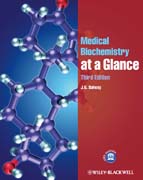
INDICE: Preface. Acknowledgements. Figure Key. SI/Mass Unit conversions. I Acids, Bases and pH. 1 Acids, bases and hydrogen ions (protons). 2 Understanding pH. 3 Production and removal of protons into and from the blood. 4 Metabolic alkalosis and metabolic acidosis. 5 Respiratory alkalosis and respiratory acidosis. II Structure of Amino Acids and Proteins. 6 Amino acids and the primary structure of proteins. 7 Secondary structure of proteins. 8 Tertiary and quaternary structures and collagen. III The Formation of ATP: Oxidation and Reduction Reactions. 9 Oxidation/reduction reactions, coenzymes and prosthetic groups. 10 Anaerobic production of ATP by substrate-level phosphorylation, phosphocreatine and adenylate kinase reaction. 11 Aerobic production of ATP. 12 Biosynthesis of ATP by oxidative phosphorylation I. 13 Biosynthesis of ATP by oxidative phosphorylation II. 14 What happens when protons or electrons leak from the respiratory chain? 15 Free radicals, reactive oxygen species and oxidative damage. 16 Aerobic oxidation of glucose to provide energy as ATP. 17 Anaerobicoxidation of glucose by glycolysis to form ATP and lactate. 18 Anaerobic glycolysis in red blood cells, 2,3-BPG (2,3-DPG) and the Bohr effect. IV Carbohydrates. 19 Carbohydrates. 20 Absorption of carbohydrates and metabolism of galactose. 21 The fate of glucose in liver: glycogenesis and lipogenesis. 22 Fructose metabolism. 23 Glucose homeostasis. 24 Glucose-stimulated secretion of insulin from ?-cells. 25 Regulation of glycogen metabolism. 26 Glycogen breakdown (glycogenolysis) and glycogen storage diseases. 27 Insulin signal transductionand diabetes mellitus. 28 Diabetes mellitus. 29 Alcohol metabolism: hypoglycaemia, hyperlactataemia and steatosis V Enzymes and Regulation of Pathways. 30 Enzymes: nomenclature, kinetics and inhibitors. 31 Regulation of enzyme activity. 32 Regulation of glycolysis and Krebs cycle. 33 Oxidation of fatty acids to produce ATP in muscle and ketone bodies in liver. 34 Regulation of lipolysis, ? -oxidation, ketogenesis and gluconeogenesis VI Lipids and Lipid Metabolism. 35 Structure of lipids. 36 Phospholipids I: phospholipids and sphingolipids.37 Phospholipids II: micelles, liposomes, lipoproteins and membranes. 38 Metabolism of carbohydrate and fat to cholesterol. 39 VLDL and LDL metabolism ('forward' cholesterol transport). 40 VLDL and LDL metabolism (endogenous triacylglycerol transport). 41 HDL metabolism ('reverse' cholesterol transport). 42 Absorption and disposal of dietary triacylglycerol, and cholesterol by chylomicronsv 43 Steroid hormones: aldosterone, cortisol, androgens and oestrogens. VIIMetabolism of Amino Acids and Porphyrins. 44 Urea cycle and overview of aminoacid catabolism. 45 Non-essential and essential amino acids. 46 Amino acid metabolism: to energy as ATP; to glucose and ketone bodies. 47 Amino acid disorders: maple syrup
- ISBN: 978-0-470-65451-4
- Editorial: John Wiley & Sons
- Encuadernacion: Rústica
- Páginas: 176
- Fecha Publicación: 10/02/2012
- Nº Volúmenes: 1
- Idioma: Inglés
